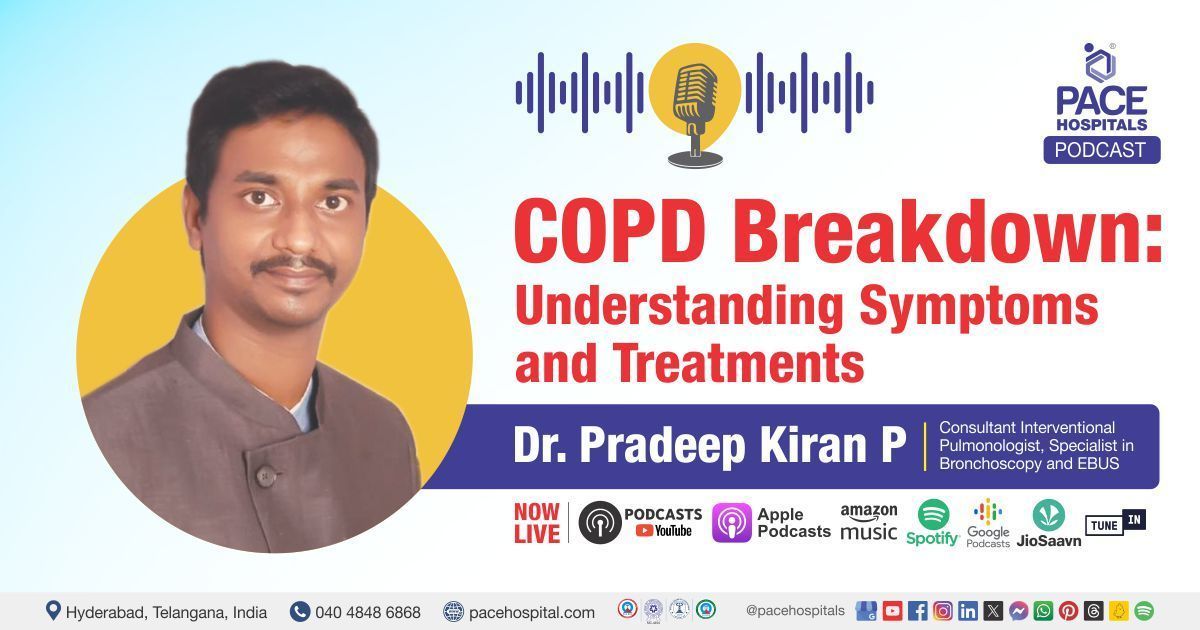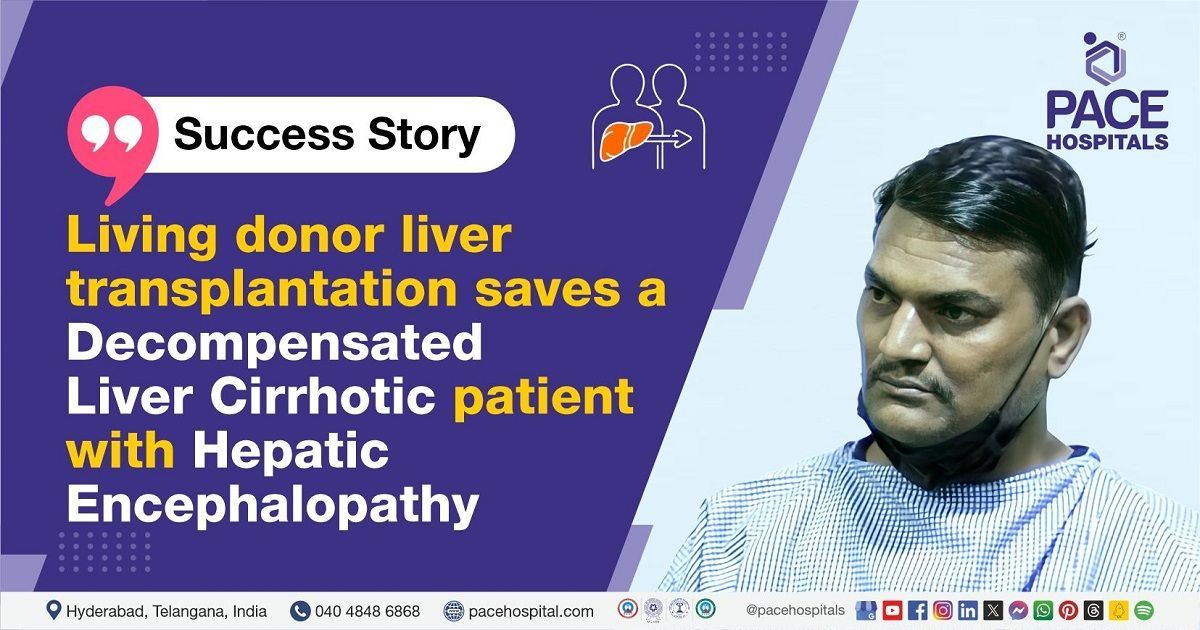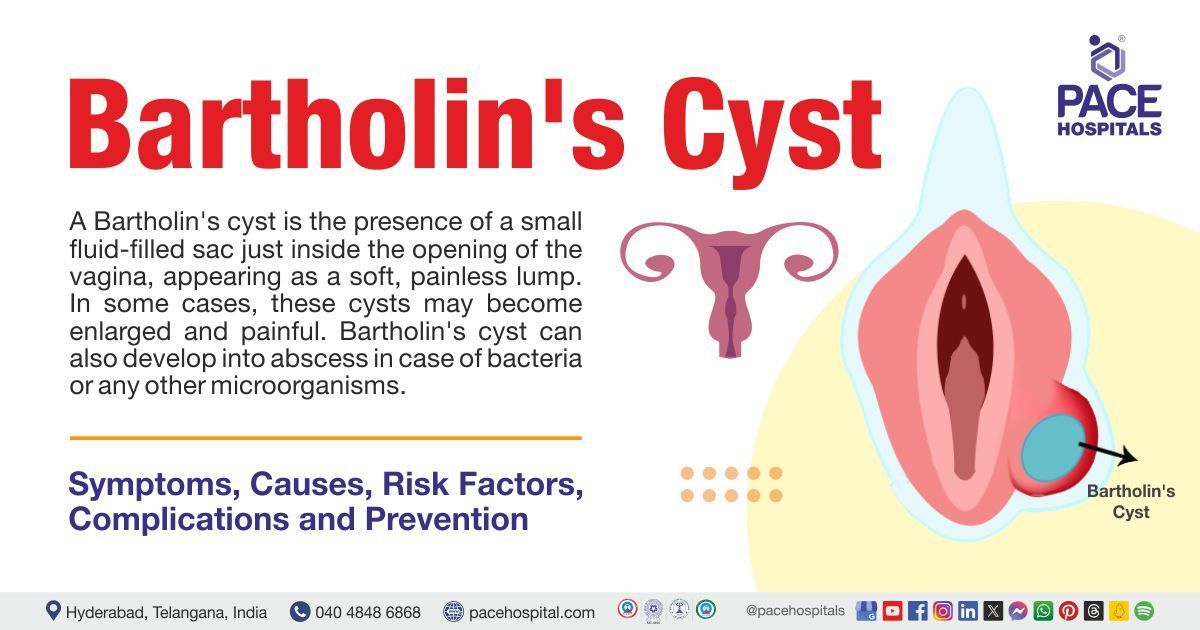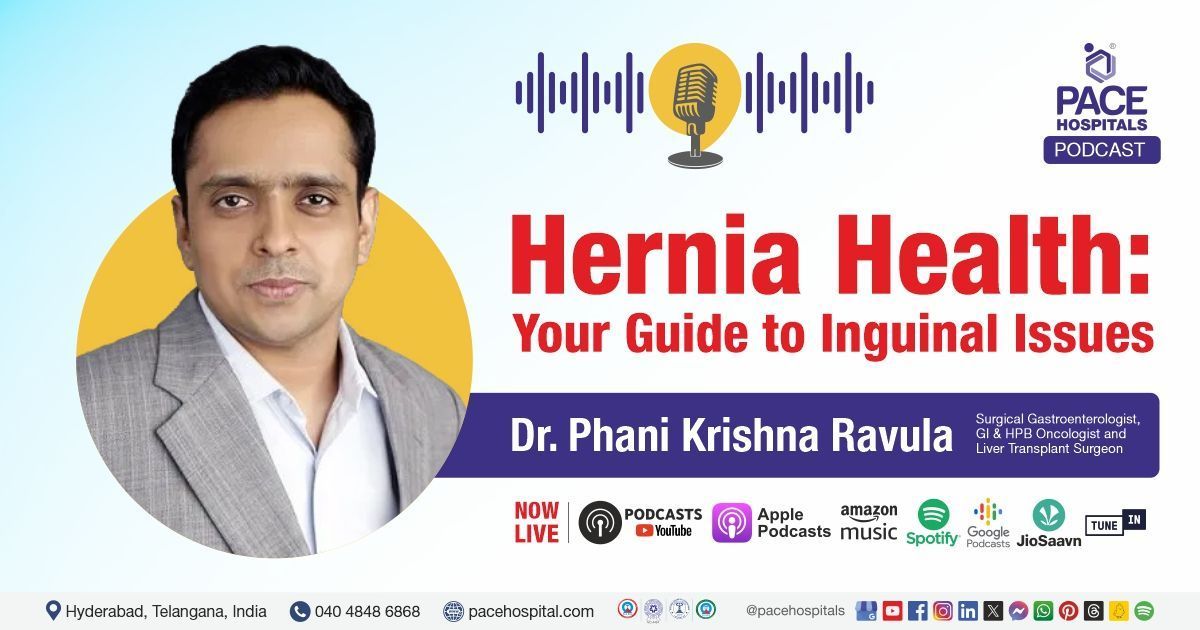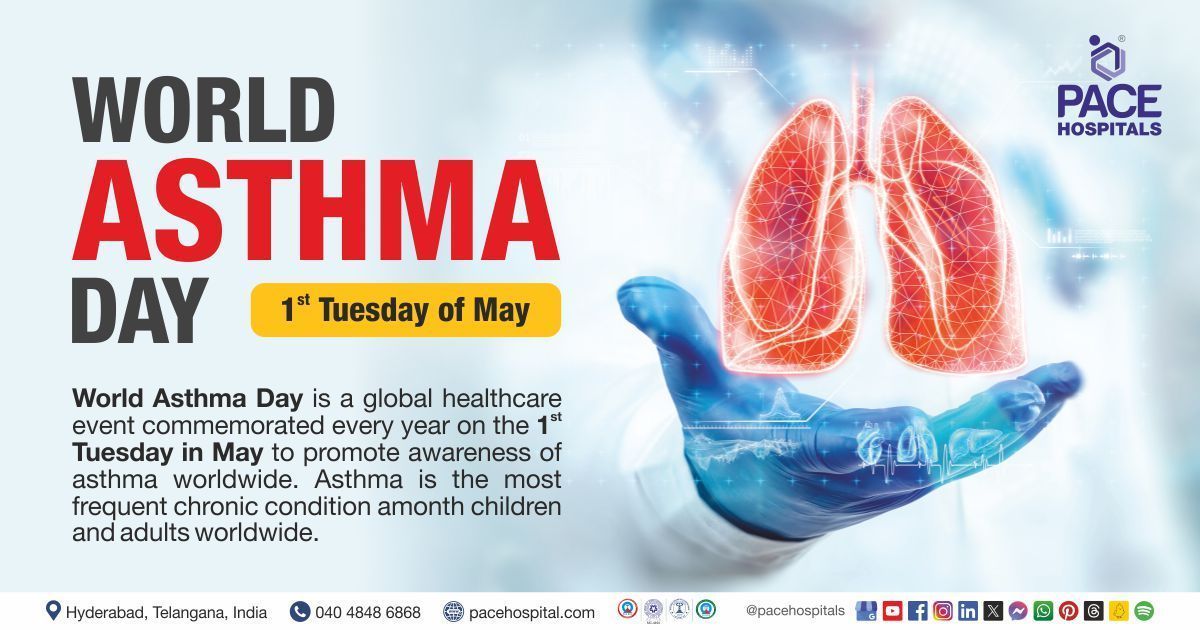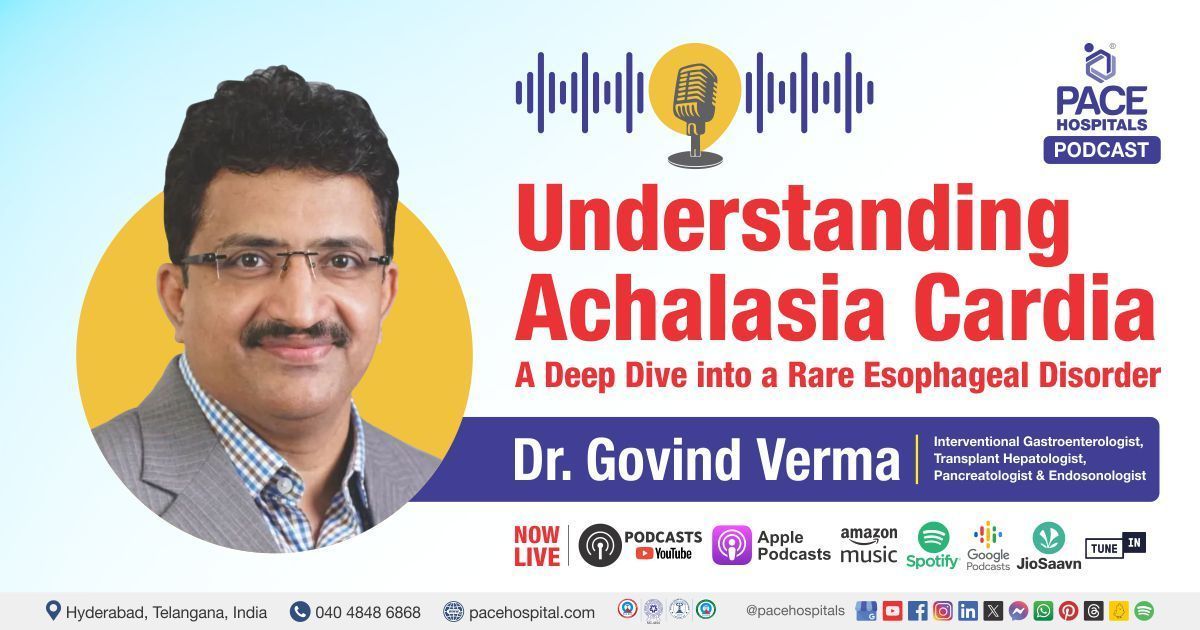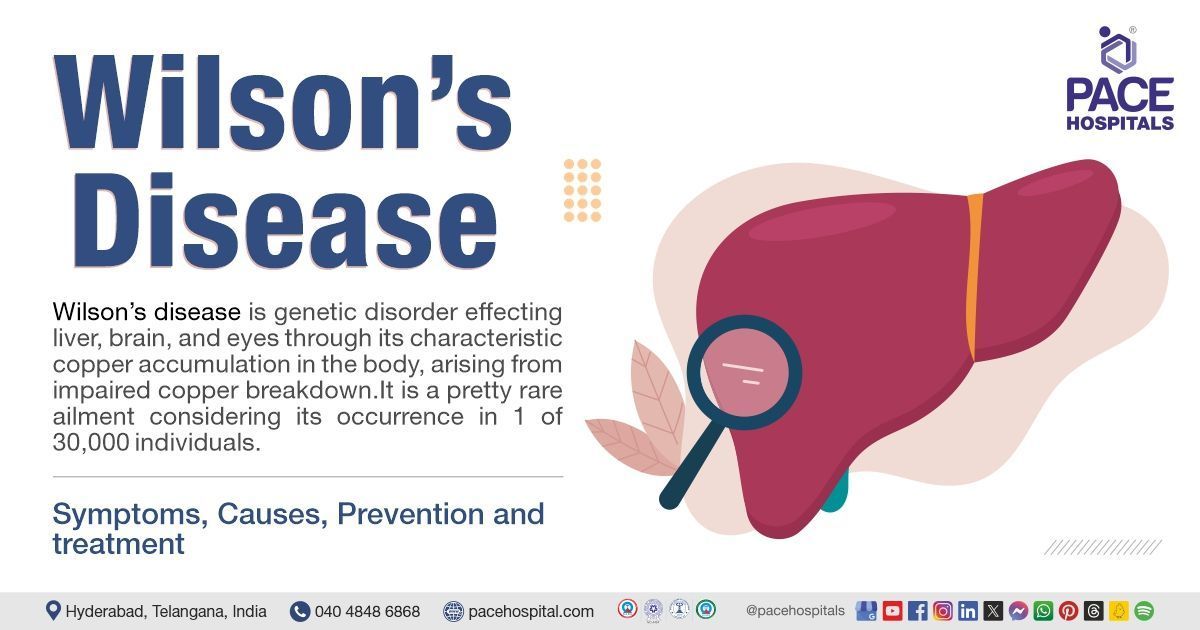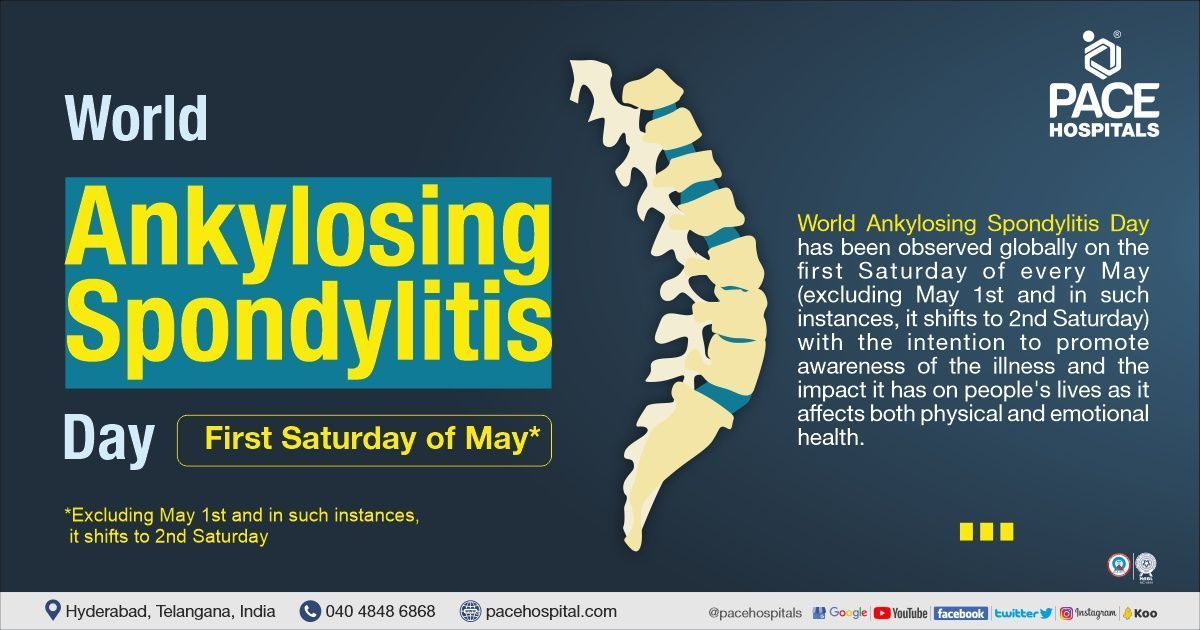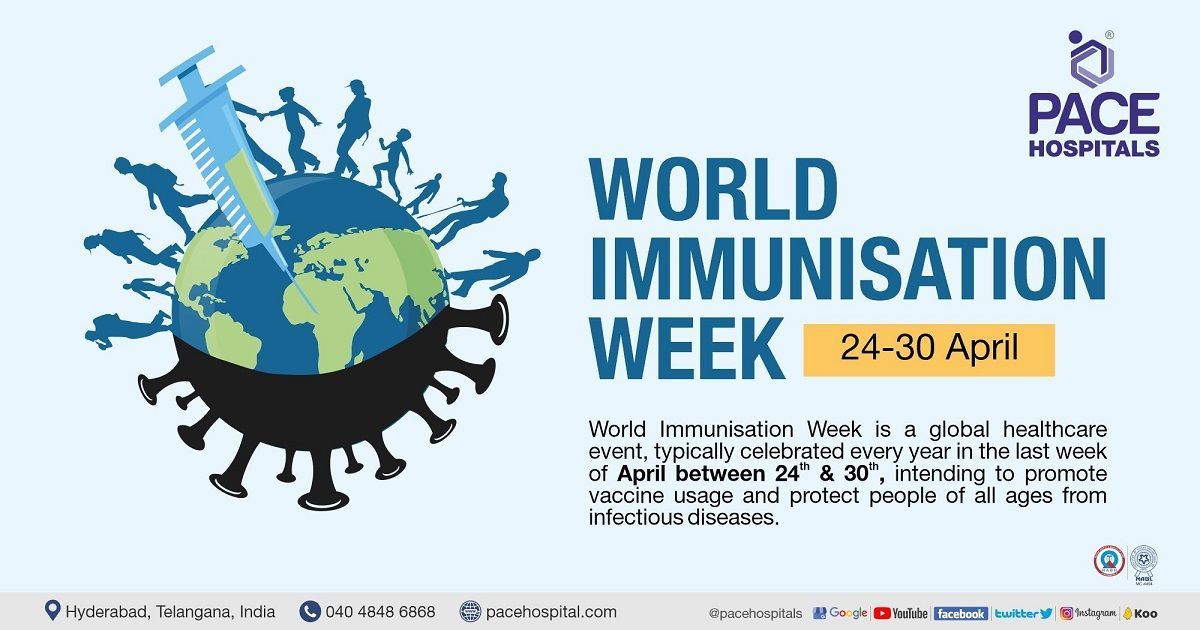COPD Breakdown - Understanding Symptoms and Treatment
Listen to
COPD is a progressive lung disease that makes breathing difficult. It encompasses conditions like chronic bronchitis and emphysema, which are characterized by airflow limitation and persistent respiratory symptoms.
Living with COPD can be quite challenging for both patients and their caregivers. COPD symptoms range from shortness of breath and coughing to fatigue and reduced exercise tolerance, greatly affecting daily life. In this episode of Chronic Obstructive Pulmonary Disease (COPD) podcast, we will discuss various strategies to manage these symptoms. These include adhering to medication, participating in pulmonary rehabilitation, using oxygen therapy, and making lifestyle modifications.
Join the
PACE Hospitals Podcast with
Dr. Pradeep Kiran Panchadi - Interventional Pulmonologist, Specialist in Bronchoscopy and EBUS to discuss the pathophysiology of COPD, risk factors, and the importance of early detection and management in improving outcomes for individuals living with this chronic condition.
-
Transcript
Host: Hello and welcome to Pace Hospitals podcast. Today we will delve into what COPD is, its causes, symptoms, diagnosis, treatment options and tips for managing this chronic respiratory condition. COPD affects millions of people worldwide and significantly impacts their quality of life.
Joining us today, Dr. Pradeep Kiran, interventional pulmonologist having wide expertise in treating and managing COPD. Today he will explore the challenges and strategies for managing COPD.
Dr. Pradeep Kiran, thank you for joining us at Pace Hospitals Hitec City.
Doctor: Thank you for inviting me. Today. I would like to explore the breathtaking realities, challenges and trumps of those navigating life with this chronic respiratory condition.
Host: Dr. Pradeep Kiran thank you for joining us. So, can you tell us what are the airway diseases and explain the chronic obstructive pulmonary disease that is COPD?
Doctor: The airway diseases shortly comprise of two important diseases, namely bronchial asthma and COPD that is chronic obstructive pulmonary disease, airway disease in which there will be a permanent damage of the airways resulting in respiratory symptoms including cuff breathlessness, chest tightness.
These symptoms may sometimes be aggravated during the cold weathers, night times, early mornings. So usually in COPD patients the cuff is usually it will be dry, but when it is secondary to some viral or bacterial infection, it may produce bottom that is maybe yellow or green or white in color.
So in COPD patients we usually tell that because a patient is coughing out violently, he will become what a term called pink puffer that means whole of his face will be reddish and pink resulting as a result of vigorous and continuous coughing of the patient.
Host: What are the warning signs of COPD that people should be aware of?
Doctor: Symptoms of COPD includes most important is cuff this cuff initially it may be dry, but most of the times it will be associated with sputum. The sputum it may vary in consistency and color. Usually if there is no infection then it will be whitish and thin or serous like a normal saliva. When there is any infection, the sputum may transform into thick mikoid, yellow, green or sometimes blood may also be associated.
The second important symptom is breathlessness. Initially the COPD will have breathlessness which will be seen only on exertion. By term exertion it indicates that whenever the patient is climbing upstairs or whenever he is doing some heavy work, or whenever he's trying to do heavy brisk walking trying to do a long walks in all these things, patient will develop breathlessness, which is the initial manifestation of the disease.
As the disease progresses, this breathlessness may be present at rest also, he might not able to do whatever he does in a normal person do. That is, he might not able to go to a bathroom or washroom without breathlessness. He may not able to wear his shirt or comb his hair.
In all these conditions, it indicates that the disease has increased in severity. The third thing is chest tightness, which is most unlikely in COPD patients.
It may also be whenever there is a secondary infection related to cough, patient may also present with fever, body pains, any rashes, if any heart is involved, and it may also be associated with swelling of legs and face.
Host: Can you explain the causes of COPD and how does smoking impact the development of COPD?
Doctor: Cause of COPD are primarily divided into genetical and acquired. So in case of genetical COPD, the most important thing is cystic fibrosis, this is a genetically genetic disease which is passed on from one generation to another generation, in which the connective tissue of the body, especially one channel, will be there that will be affected, resulting in permanent dilation of the lungs, wherein the gaseous exchange will be affected.
In these cystic fibrosis patients, not only COPD changes will be present, they might also have sinusitis chronic sinusitis might be present, they might have fertility issues, they might have recurrent urinary problems. They will also have diabetes all these things will be present.
The under one is, some other changes might be there, some other genetic diseases such as antibasement membrane syndrome, alpha one antitrypsin syndrome, all these things they are usually hereditary and very uncommonly seen in Indian population. They are more common in western population. Coming to the acquired causes, acquired causes the most important cause of COPD is smoking.
Host: How does smoking affect a COPD lung?
Doctor: In a normal lung, usually we'll have cilia, cilia means cylindrical type of things which will work as a they move whatever secretions we have in our airways towards the throat so that they can be swallowed or spit out, but when we smoke, most importantly these cilia processes, they will be affected their movement will be sluggish in the initially, and later on they'll all die, resulting in aggregation of the secretions in the airways.
Secondly, the epithelium or whatever the tissue that is covering our airways will be damaged, resulting in the airways inability to exchange the gases.
Thirdly, the airway smooth muscle, this will be distracted, leading to dilatation means the airway will be enlarged and there will be fibrosis means the scarring will be formed in between the layers of the airways, this results in ineffective airway exchange.
So in these cases, whenever normally in lungs, oxygen will be inhaled and carbon dioxide will be exhaled. This happens at a very minute level, that is, at alveolar level, where oxygen enters into the blood through the alveoli, and carbon dioxide diffuses back into the airways through the same alveoli.
In smoking, what happens, this alveoli will be damaged. This results in inability of the lung to transfer oxygen into the blood and also take up the carbon dioxide from blood into the air. So as such, what happens, as a disease progresses, carbon dioxide will start penting up, will be accumulating in the lungs, and the oxygen, which is coming from outside into the lungs.
It will not have space to accumulate into the alveoli and then go into the blood. So as such, these patients will start developing breathlessness. Secondly, this smoking also causes increased oxidative stress, so this oxidative stress, again, it causes damage to the airways.
Thirdly, secretion of the mucus, water secretions we are having saliva like secretions, will be present in the airways also, these also will be thickened and their clearance will be affected to a much degree. Fourthly, smoking will ultimately lead to development of lung cancer. The second acquired cause of COPD is pollution.
Nowadays we're all dependent on bikes, cars, whatever it is, petroleum products. So these fossil fuels, they will eliminate a lot of gases which are poisonous, not only to the atmosphere, towards also ,so this usually the most important, again, is carbon dioxide, carbon monoxide.
Carbon dioxide, as such, will cause accumulation inside the lungs, preventing the oxygen from entering into the blood and also it crosses the blood brain barrier and causes increased sleepiness in the patient.
Carbon monoxide, it has much more affinity when compared to oxygen so it displaces oxygen from the lungs and it combines with the haemoglobin and as such, we'll develop breathlessness. The third one is, which is quite uncommon nowadays, is cooking.
In the good olden days, people used to use coal or wood for the cooking purposes. this will release carbon monoxide or carbon dioxide. So nowadays it is decreased, but still it is a very important thing.
The fourth one is occupation related.
You can see in coal mines where there's continuous burning and oil fields and all these things, there'll be continuous burning of the oil, or sometimes coal will be burning in all these institutions, these things, they will cause the similar effects as smoking.
Host: Can you explain the different stages of COPD and how they progress?
Doctor: Usually, COPD is staged, basing on a test called pulmonary function testing, or spirometry, that's called PFT. In this, it has been staged into four stages, stage one, stage two, stage three, stage four. These stages, as the number increases, it increases in severity and as such the treatment also will be increased as per the stage and also complications rate will also increase in these stages.
Host: How is COPD diagnosed?
Doctor: As I told always any diagnosis of a pulmonary complaint it should always start with clinical history followed by laboratory investigations. So clinical history is the symptoms that are important as such like cough with expectation, breathlessness, unable to the cough which is increasing at night time. All these indicates some airway disease coming to the laboratory diagnostics.
Laboratory diagnostics they're differentiated into blood investigations, pulmonary function test and radio vascular investigations. Coming to blood investigations in the early phases, COPD may show only normal blood tests like in a blood picture there will be normal, but with the increased severity and with a long duration, the hematocrite of the patients that is viscosity of the blood will increase.
So in a chronic COPD patient, hemtocrite will be increased and if there is any secondary infection, the total leukocyte counts or WB wild blood cells will increase. Also in some types of COPD eosinophils may be increased. It's not mandatory for eosinophils to be increased in COPD patients.
Increased neutrophils or eosinophils in a COPD patient indicates bad prognosis and also other coming to other blood investigations. In COPD patients, Ddimer levels might be elevated because owing to the increased viscosity of the blood and also there will be minor changes in other parameters of the blood such as ESR, CRP owing to the persistent inflammation in the airways.
Secondly, airway test, that is pulmonary function test in which the patient or the person will be asked to blow air into a machine where it shows the variation in the airway formula, airway coming in and out. This test if there is any reversibility, it goes in favor of a asthma. If there is no reversibility then it indicates it is COPD.
This test is also indicated to monitor the treatment and how the person is compassionate at taking the treatment, how he is improving. All this is followed by the follow up PFT the third one radiology radiology will be again it has an x-ray, chest x-ray and CT scan.
First will be chest X ray, in chest x ray. In the initial days COPD may not show anything. Sometimes there will be increased bronchovascular markings inconsistent with the bronchitis, but in lung standing COPD as I told you, COPD is a disease where the airways will be permanently damaged and deleted as such the lungs will be permanently overinflated.
The same organflated lungs will be seen in chest x-ray in the form of increased lung spamchemous space, increased blackening of the lungs and also the diaphragm which is the main respiratory muscle. The shape of it which is usually an inverted bell shape will be shape will be somewhat disoriented like it will be irregular in shape and the next one will be coming to CT scan.
In CT scan we call it emphasimetus changes where the dilated airways will be visible in CT and chronic changes in early COPD. Usually CTR X-Ray changes will not be visible in cases of acute exacerbation of COPD wherein the most common cause is viral infection or bacterial infection and the sputum production will be increased.
In these cases, sputum tests needs to be done. The sputum test may include gramstein, tb test and the culture and everything. So if the culture is positive once in a COPD patients the subsequent exacerbation that is increase in symptoms requiring hospitalization therein, the previous culture report will be taken as the basis to start the antibiotic treatment.
Host: Is asthma and COPD are same? If not then what are the difference between them?
Doctor: COPD and asthma both will be seen as a spectrum of the same disease means if a patient is asthmatic, if he is not taking a proper treatment, he may convert into COPD. The COPD changes can be seen him in the long term. So earlier it was thought that COPD and asthma are different but at present it is seen as the same disease with two ends.
Asthma will be the initial end. COPD is the final outcome. So in this disease, but usually in early changes, what we can see is primal in PFT (pulmonary function test) in pulmonary function test in asthma the changes are reversible say bronchodilator changes will be seen.
In COPD the changes will be partially reversible or irreversible. Coming to chest x ray in asthma, usually the chest x-ray will be normal whereas in COPD hyperinflated lungs will be seen.
Similarly in CT also especially in HRCT, in asthma there will be early small vessel disease changes. Small airway changes will be seen, that is air trapping will be minimal but in COPD the changes will be very broad and will be easily visible.
Host: What are the different treatment options available for COPD?
Doctor: Coming to treatment how do you treat a case of COPD? Any airway disease, the major cornerstone of treatment is inhaler therapy. The inhalers there will be different types of inhalers are available in the market. Usually we start with a combination of inhale cartcoasteride and long acting beta agonist. Depending on the severity of disease, it might have to be taken daily.
If the severity of disease is progressing, then the dose of the inhalers will also be increased along with additional medication may also be started.
Host: What is the role of antibiotics in COPD treatment?
Doctor: Usually in a stable COPD patient there is no role of antibiotics or antivirals, but if we are suspecting an acute exacerbation of COPD, mind you, in acute exacerbation the most common cause is viral followed by secondary bacterial infection.
So if such a patient, if he requires hospitalization, that is, indications for hospitalization are again decreased oxygen saturation, purulen secretions, high grade fevers, increased breathlessness in spite of good inhaler therapy in all these conditions.
Patient may need antibiotic therapy. Antivirals usually will not be using, but if it is indicative, if there is extensive CT shadowing indicating of viral infection, then only we'll be using antiviral therapy. Also, if the sputum culture shows any fungal development, then antifungals may be initiated maybe it's not mandatory.
COPD should be viewed as a systemic disease rather than a disease pertaining only to lungs. So we all know that in chest, lungs and heart are side by side. So when lungs are affected to such an extent that it is irreversible, then heart will also be affected.
The most common finding or complication of a COPD patient is pulmonary arterial hypertension. Pulmonary arterial hypertension if it is mild, it may not require any treatment, but if it is moderate or severe, then the treatment of pulmonary arterial hypertension needs to be addressed.
The reason being in cases of severe pulmonary arterial hypertension, right side of the heart will be affected and ultimately the patient will land in heart failure. The second thing is in COPD patients, as we discussed earlier, the blood viscosity will be increased.
This increased viscosity of the blood may lead to clotting of the bloods in various places, such as leading to heart attacks, brain strokes, leading to paralysis, sometimes pulmonary thromboembolism wherein the clot will be lost in a pulmonary vasculature all these things might happen
Again the COPD patients, because of the chronic cough and inability to breathe out, they may land in chronic respiratory failure wherein they need continuous oxygen support at home also. Sometimes because of this acute exacerbations, patients will land have a will land in acute respiratory failure along with secondary infection which may progress despite of a good treatment and it may prove deadly.
Patients might lose life because of acute exhibition of COPD and a single ICU admission indicates that the father if a patient is admitted to an ICU and discharged, it's to be careful that there's a high chance that about 25% to 30% of chances that a second exorbitation may lead to second ICU admission. The more the ICU admissions, the more the mortality is.
Host: How to have a good life with chronic obstructive pulmonary disease?
Doctor: Any disease, if it is taken correct, diagnosed correctly and a good medication is given and good compliance of the patient. That means time and proper technique of taking inhaler therapy of a COPD patient.
They can maintain very nice life but irregular use of medications, inappropriate technique leads to complications and ultimately the disease will be out of hand. So my advice to everyone watching this video is if you are a COPD patient or an asthma patient, always follow your medication properly.
If you are having an inhaler, don't get festered or don't feel shy to asking your physician or pulmonologist to show the correct and proper technique of inhaler use. If you're finding difficulty in taking your inhaler, you can use spacer device also, But mind you, a proper technique, a proper therapy, a proper medication, timely medication will help you go a long way.
Thank you Dr. Pradeep Kiran for being with us to share crucial information on topic COPD to our listeners.
Doctor: I hope this information will empower listeners as knowledge and support are powerful tools in navigating life with this condition. Remember, every small victory counts, every setback is an opportunity for growth and every breath is a reminder of your unwavering spirit. Together, let's continue to raise awareness, foster understanding and advocate for better care and support for individuals and families affected by COPD.
Host: If any of you have any further questions regarding COPD, please don't hesitate to consult a pulmonologist. It's crucial to remember that while this chronic respiratory condition presents significant challenges, it doesn't define the individual's living with it. With proper management, support and a positive outlook, people with COPD can lead fulfilling lives despite the obstacles they face.
We will see you soon with another episode on Pace Hospitals podcast. Until next time, stay informed, stay empowered and stay resilient. Thank you.
Request an appointment
Fill in the appointment form or call us instantly to book a confirmed appointment with our super specialist at 04048486868
Appointment request - health articles
Thank you for contacting us. We will get back to you as soon as possible. Kindly save these contact details in your contacts to receive calls and messages:-
Appointment Desk: 04048486868
Whatsapp: 8977889778
Regards,
Pace Hospitals
Hitech City and Madinaguda
Hyderabad, Telangana, India.
Oops, there was an error sending your message. Please try again later. We will get back to you as soon as possible. Kindly save these contact details in your contacts to receive calls and messages:-
Appointment Desk: 04048486868
Whatsapp: 8977889778
Regards,
Pace Hospitals
Hitech City and Madinaguda
Hyderabad, Telangana, India.
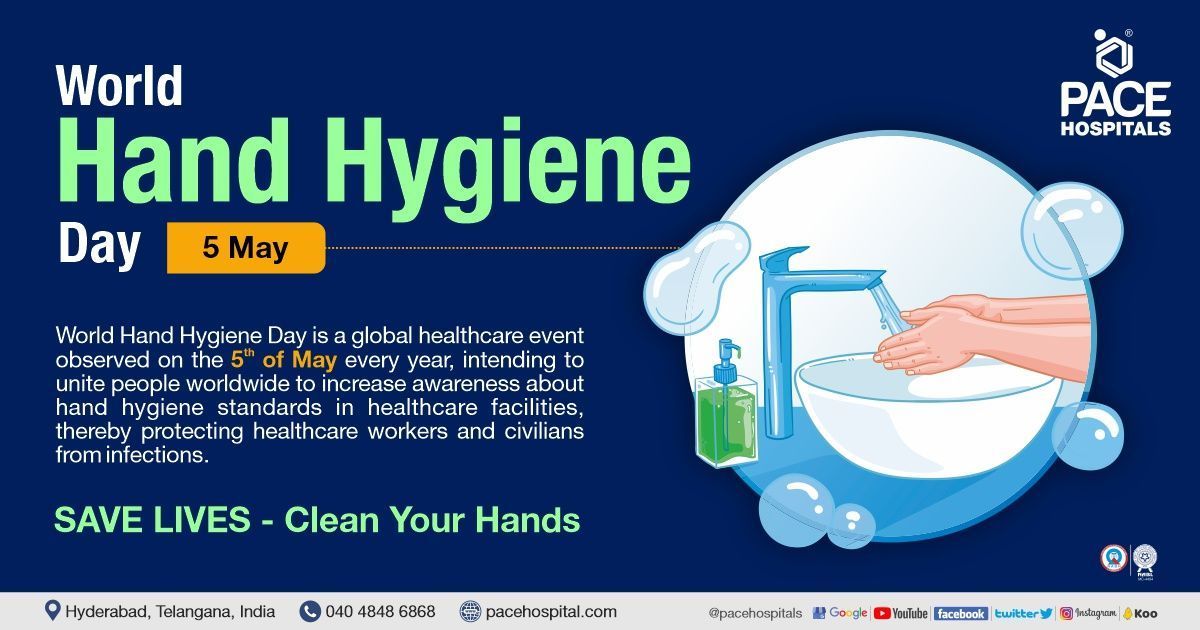
Our Locations
Subscribe to our newsletter and stay updated with the latest health information.
By clicking on subscribe now, you accept to receive communications from PACE Hospitals on email, SMS and Whatsapp.
Subscribe to PACE Hospitals News
Thank you for subscribing. Stay updated with the latest health information.
Oops, there was an error. Please try again submitting your details.
-

Payment in advance for treatment (Pay in Indian Rupees)
For Bank Transfer:-
Bank Name: HDFC
Company Name: Pace Hospitals
A/c No.50200028705218
IFSC Code: HDFC0000545
Bank Name: STATE BANK OF INDIA
Company Name: Pace Hospitals
A/c No.62206858997
IFSC Code: SBIN0020299
Scan QR Code by Any Payment App (GPay, Paytm, Phonepe, BHIM, Bank Apps, Amazon, Airtel, Truecaller, Idea, Whatsapp etc)
Call us at 04048486868
ADDRESS
PACE Hospitals
Hitech City : Beside Avasa Hotel, Pillar No. 18, Hyderabad - 500081
Madinaguda: Mythri Nagar, Beside South India Shopping, Madinaguda, Hyderabad - 500050
QUICK LINKS
Disclaimer
General information on healthcare issues is made available by PACE Hospitals through this website (www.pacehospital.com), as well as its other websites and branded social media pages. The text, videos, illustrations, photographs, quoted information, and other materials found on these websites (here by collectively referred to as "Content") are offered for informational purposes only and is neither exhaustive nor complete. Prior to forming a decision in regard to your health, consult your doctor or any another healthcare professional. PACE Hospitals does not have an obligation to update or modify the "Content" or to explain or resolve any inconsistencies therein.
The "Content" from the website of PACE Hospitals or from its branded social media pages might include any adult explicit "Content" which is deemed exclusively medical or health-related and not otherwise. Publishing material or making references to specific sources, such as to any particular therapies, goods, drugs, practises, doctors, nurses, other healthcare professionals, diagnoses or procedures is done purely for informational purposes and does not reflect any endorsement by PACE Hospitals as such.

